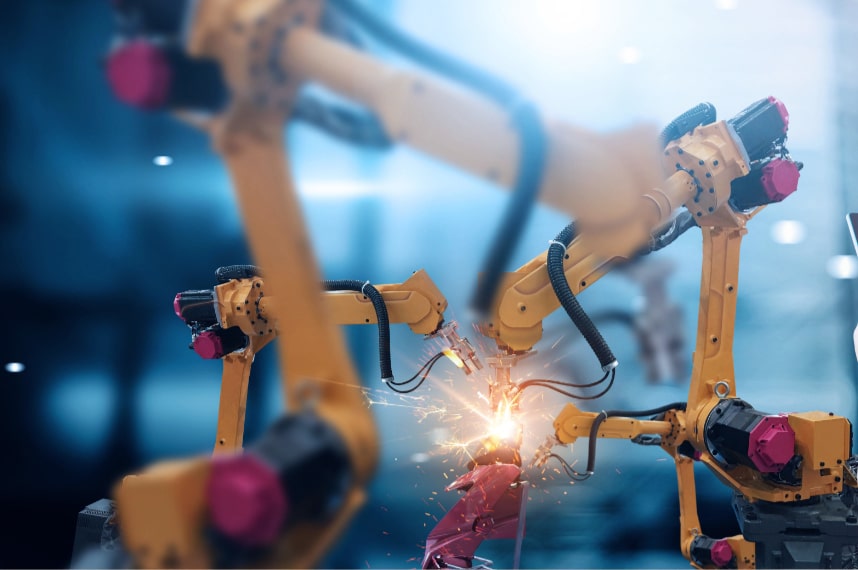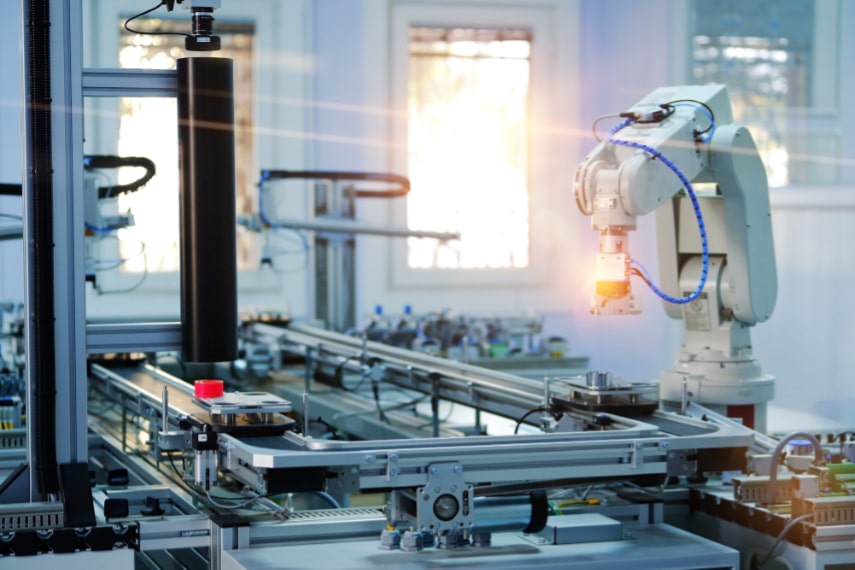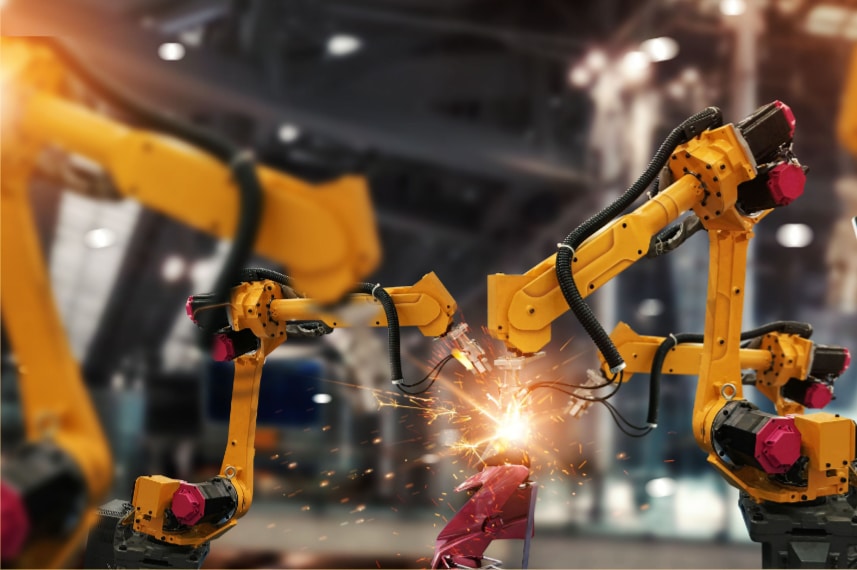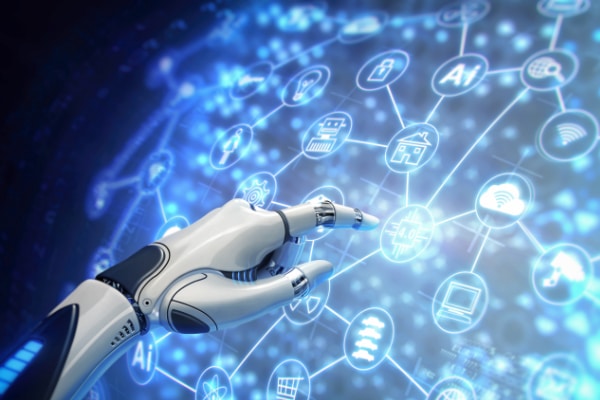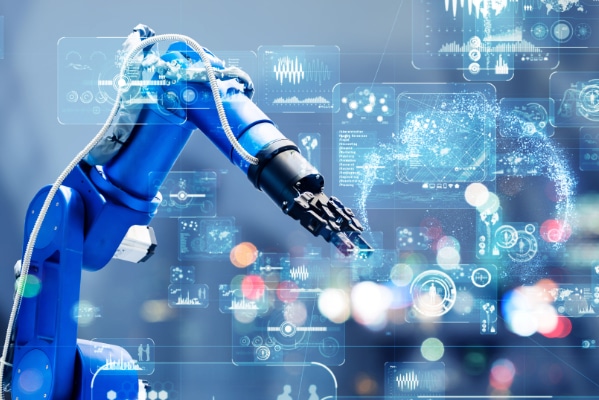With Industry 4.0, manufacturing potential has once again increased exponentially. It signals a great economic change; however, the ins-and-outs of Industry 4.0 aren’t yet fully understood by all those it could affect. Here we present the fourth industrial revolution explained.
Rise of the fourth industrial revolution
The fourth revolution is a product of the three industrial revolutions before it.
- The first industrial revolution, dated 1760: introduction of steam- and water-powered machines, transitioning from manual methods of manufacturing to machinery.
- The second industrial revolution, circa 1870: catalysed by oil, gas, and electric advancements which enabled mass production via assembly lines.
- The third industrial revolution, dated 1947: brought automation, electronic technology, and IT systems to the manufacturing landscape creating digital processes.
The fourth industrial revolution builds upon these prior revolutions, increasing the digital capabilities within manufacturing further with the Internet of Things and Cyber-Physical systems.
What is the impact of Industry 4.0 for manufacturing businesses?
The fourth industrial revolution has significantly impacted manufacturing businesses, enhancing their potential to produce intricate, custom products through cost-effective processes. This allows them to better cater to the changing needs of their customers.
Industries will be transformed by automation and artificial intelligence, leading to the creation of new job categories and the displacement of others.
The upcoming revolution in the workforce will bring significant changes, individuals need to adjust to new skills and technologies as job roles develop. To succeed in today's fast-paced environment, businesses must prioritise continual learning, upskilling, diversity, and emotional intelligence. To adapt to evolving job roles, individuals will need to acquire new skills and technologies.
At Wrekin Sheetmetal, we are committed to continuous improvement through ongoing training and upskilling programs. Our extensive upskilling program offers all team members the chance to acquire new skills, enabling them to confidently and effectively use new technology and more.
The rise of smart factories highlights the importance of integrating technology with human expertise.
Advantages Of Industry 4.0
Predictive maintenance.
Through the use of IoT sensors, predictive maintenance can identify maintenance issues in real-time. Thus, reducing unexpected downtime.
Increased accuracy, quality, and efficiency.
Machines can process vast amounts of data faster than ever. This allows businesses to improve their processes, leading to a greater quality of products and customer service.
Greater workplace safety.
Technologies are changing the way we live and how tasks are completed. Dangerous and monotonous jobs are undertaken by machines leading to a safer workplace environment. Therefore, creating a happier work environment.
Creation of new jobs.
New technologies create new jobs within the manufacturing sector and beyond. However, the need for highly skilled jobs will be paramount, as businesses need people who will operate this technically advanced equipment.
Alongside this, businesses investing in new innovative technology will be attractive to the new and upcoming workforce. Showcasing that your business is transitioning from a traditional factory to a smart factory shows that your business is adaptive to the times.
Cut costs.
Implementing industry 4.0 technologies allows businesses to cut costs, increase profit, and grow. Businesses which are adopting these new technologies can optimise all areas of their business.
Industry 4.0 Challenges
Lack of qualified staff.
Manual skills will be lost with the move towards automation, with an increasing need for those qualified in new technologies. The demand for highly skilled staff in the manufacturing industry will increase. Due to technological advances, those who are less skilled will be worse off, leading to greater inequality.
Expensive initial investment.
Large investments into expensive Industry 4.0 machines may prevent some manufacturers from developing in this direction. Not only is the cost of the technology high but also the expertise that comes with it. Considering whether you have the expertise within your business to operate new technology is important.
Data Security.
With cloud-based technologies becoming commonly used, it makes businesses vulnerable to cyber attacks.
Adaption
Companies must ensure that their team are on board with the changes that the fourth industrial revolution will bring. Ensuring that everyone knows how to use the technologies will be the key to a successful and happy business.
Retraining and upskilling of staff are paramount- ensuring your staff knows how to use the new technology. With the right workforce, businesses can succeed.
Key Drivers Of The Fourth Industrial Revolution
The key drivers in the fourth industrial revolution include:
1. Internet of Things
The Internet of Things (IoT) refers to the connection of physical devices to digital data and software, enabling them to work as one.
2. Smart Factories
Smart factories utilise computer-integrated machinery, or cyber-physical systems, for automated manufacturing and improved decision-making. Enabling a safer work environment, increased productivity and processes to be more streamlined.
3. Cyber- physical Systems
Cyber-physical systems (CPS) are similar to the IoT in that digital technology is integrated with physical devices, however, CPSs have increased interactive and behavioural abilities.
4. Cloud Computing
The complete manufacturing process can be integrated onto cloud software with cloud computing, meaning it is hosted over the internet.
5. Artificial Intelligence
Artificial intelligence is intelligence displayed by machines; in a manufacturing context, this can be used for data extraction and intelligence-driven manufacturing. Allowing for defects and problems to be identified early on and eliminating unexpected downtime.
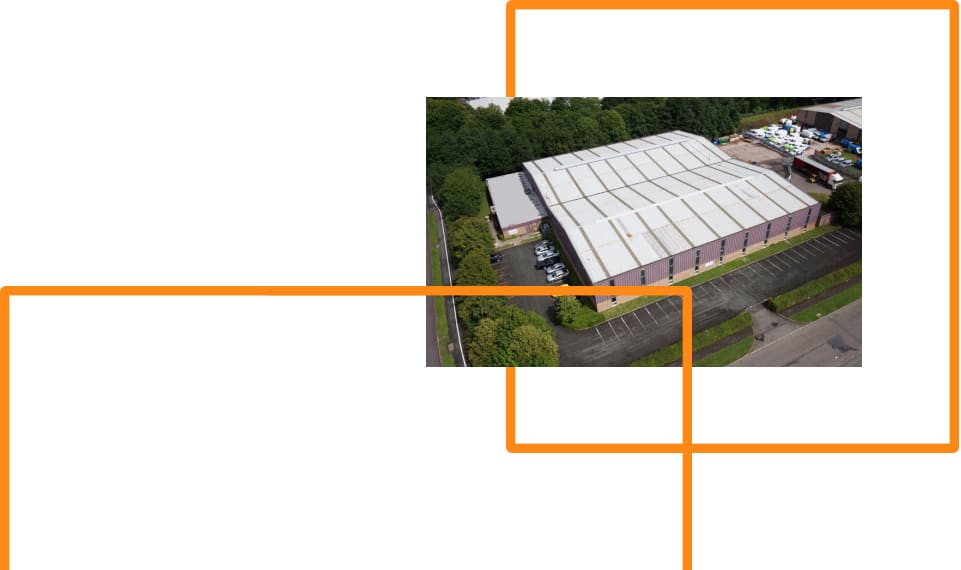
How can we help?
With over 17+ years of knowledge and experience, we’re confident we can offer a flexible solution beneficial to both parties, get in touch with us today.
